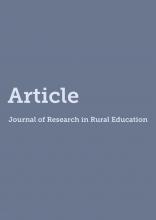

book
The number of deaths caused by the use of heroin or prescription pain killers nationwide has increased annually over the past decade with some of the most rapid growth occurring in the nation’s most rural areas. This qualitative study examines the responses of districts and superintendents to this growing health crisis in twelve rural school districts in western Pennsylvania, an area heavily affected by the recent opioid epidemic. I analyze how superintendents in these districts worked with their local school boards and communities to develop district programming to address local opioid misuse and addiction. I find that the capacity of superintendents to respond to the opioid crisis in their districts was at times limited by local perspectives of place and drug addiction, which justified limited support for district efforts to target this crisis. This research, however, also finds that the capacity of educational leaders to respond to this crisis expanded when community perspectives changed, typically after a community incident that stirred public support for responses to this crisis. However, despite these constraints or supports for leadership action, district responses to this crisis largely predicated on the ability of superintendents to successfully act on and within their unique zone of tolerance.

book
Although some studies have explored the influence of academic achievement on rural students’ college access and success, little research has analyzed the relationship between students of different types of rural communities and their persistence in postsecondary education. This study examined the likelihood of college-going students from three different types of rural communities to successfully transition into and persist at a four-year residential college. Specifically, multilevel logistic modeling was used to analyze the odds of students’ persisting in college for at least two academic years based on whether they were from rural tourist communities, rural college communities, and other rural communities. The analysis controlled for a variety of student and high school factors. Findings revealed that student-level factors related to poverty and academic readiness have the greatest effects on college persistence, while the type of rural community has no significant influence.
